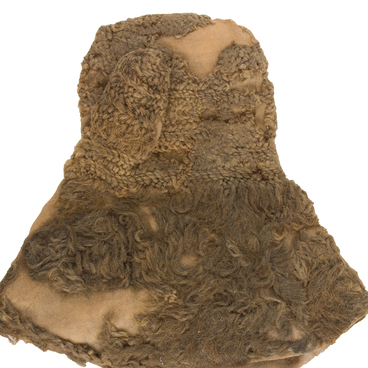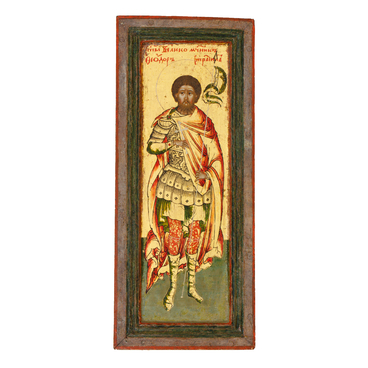This kayak model was commissioned by the Arkhangelsk Public Museum. It is unknown when exactly it was made, but the object dates back to the period between 1897, when the museum was formed, and 1905, when the kayak was published in the museum catalog.
This is a small covered flat-bottomed vessel. Nine planks are attached with rivets. In the center of the deck there is a single-spar mast with a straight sail. The stem, a wooden beam on the bow of the ship, is raised high and bent. The stern of the boat is transom, the steering wheel is mounted and has tiller control. The cargo hatch opens from the starboard side, the cargo door - from the portside. An anchor capstan with a rope is on the roof of the cargo compartment, there is a metal anchor and a float with wooden dowels. On the nose there is a cable tier. There is a living compartment with two windows in the aft.
The Kayak (in some documents it was written as ‘kayuk’) actually became the first multifunctional vehicle of Pomorye. In addition to river transportation, where barge-haulers used to pull the kayak when moving against the current, these small single-masted boats were used for loading (unloading) sea vessels when passing through the shoal at the mouth of the Northern Dvina. They were also used as storage depots awaiting ships from the sea or during the inter-navigation period. Kayaks, just like transport ships, could be loaded and unloaded without the use of piers and marinas. Loading happened through deck hatches directly from sea vessels, and also through side hatches and doors - from rafts, boats and other river vessels.
The Severnaya Dvina River was the main transport artery connecting the Arkhangelsk Sea Port with the center of Russia. Arkhangelsk, founded by the decree of Ivan the Terrible in 1584, until the beginning of the 18th century, was the only seaport where ships with goods arrived from Western Europe. During the navigation period, hundreds of ships from Holland, England, France and other countries brought weapons, luxury goods, wine, silver, and flax, hemp, and blubber (fat from marine animals), high-quality mica, which in Western Europe was called ‘muscavite’, was exported. By order of Tsar Fedor, foreigners were forbidden to travel outside Arkhangelsk, and cargo was transported to the central regions only by Russian merchants.



